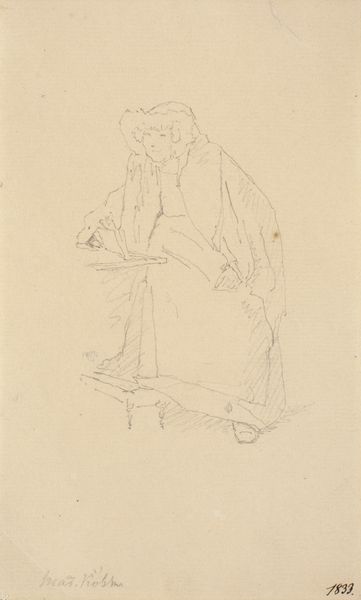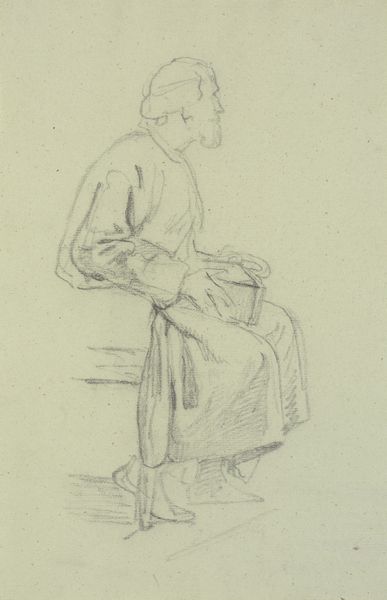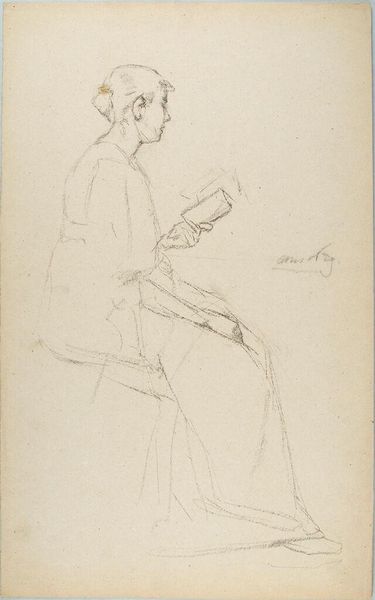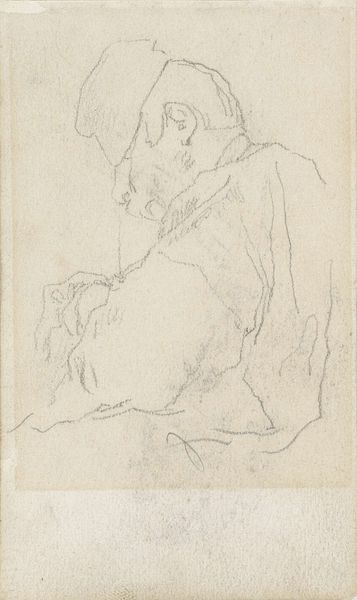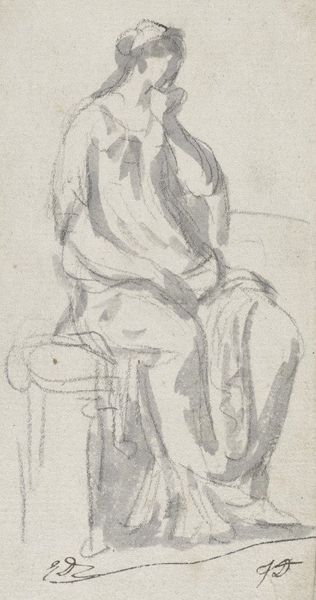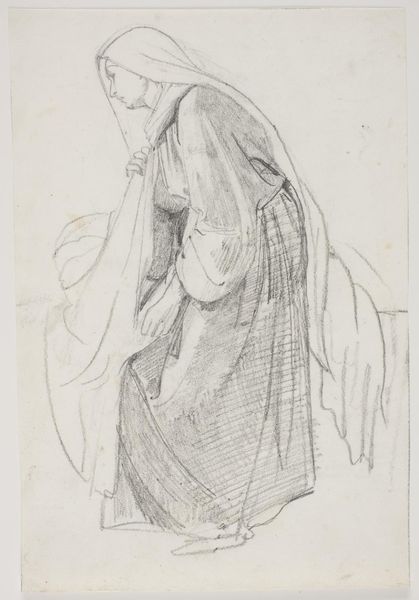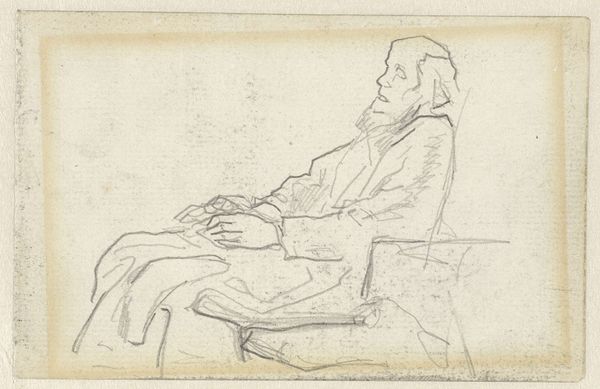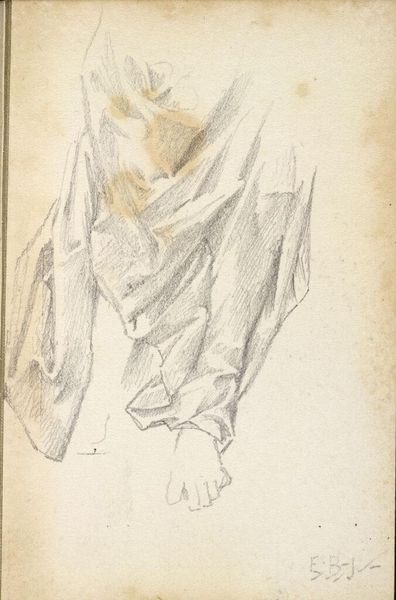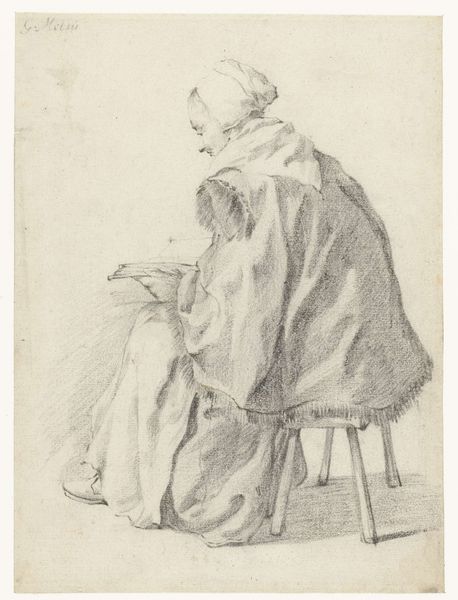
drawing
#
portrait
#
drawing
#
dutch-golden-age
#
figuration
#
realism
Copyright: Public Domain: Artvee
Curator: Immediately, I sense such quiet observation and contemplation, almost akin to seeing someone wrapped in thought and prayer. Editor: It's a beautifully understated pencil drawing by Richard Nicolaüs Roland Holst titled "Zittende vrouw met hoofddoek," created in 1904. Holst was quite influential in the Dutch art scene at the turn of the century, blending symbolism and social commentary. Curator: It reminds me of a medieval manuscript illumination. The figure is so self-contained; the headdress is practically a halo. The lines suggest this figure might exist outside of our world and the material's roughness makes me think she's carrying the weight of that existence. Editor: That headdress could indicate a particular religious order or social standing. During that period, depictions of women were heavily coded, reflecting societal expectations or subverting them. You've highlighted her halo-like quality. Is this symbolic, imbuing the subject with dignity or saintliness in some way, perhaps? Curator: Possibly. It also serves to isolate her, which I sense is also reinforced by the lack of setting and detail, shifting attention instead to the subject. I wonder what is in the pages before her—sacred texts or personal memoirs, perhaps offering keys to understanding both societal demands and her internal world. Editor: Given Holst's socialist leanings, could this be a statement about the plight of women? Or a commentary on faith during the rapid social changes of the time? It makes you question, doesn’t it? What are these simple strokes and lines telling us? Curator: Yes, in my view, Holst offers a study in the tension between societal roles, what we expect women to represent—and the human figure—what she carries and represents about herself. Editor: Holst leaves it open-ended. It prompts us to consider both the inner life of this woman and her socio-historical context, highlighting the complex interplay between personal identity and public representation in fin-de-siècle Netherlands. Curator: It speaks quietly and eloquently to those very universal experiences, still. Editor: Yes, art should ignite further investigation—in turn deepening one's experience—which Holst has achieved with "Zittende vrouw met hoofddoek".
Comments
No comments
Be the first to comment and join the conversation on the ultimate creative platform.
